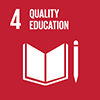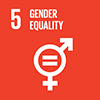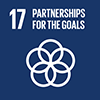June 2022 - You are accessing an old version of our website. The SDGs Voluntary Commitments have been migrated here: https://sdgs.un.org/partnerships
You will be redirected to the new Partnership Platform in 10 seconds.
June 2022 - You are accessing an old version of our website. The SDGs Voluntary Commitments have been migrated here: https://sdgs.un.org/partnerships
You will be redirected to the new Partnership Platform in 10 seconds.
Our practice supports HIV+ single mothers raising AIDS orphans in Uganda and Kenya by offering two programs: the income generating program and life planning program. There are 12.2 million AIDS orphans worldwide, 83% of whom are in Sub-Sahara Africa. Although antiretroviral drugs have reduced AIDS-related deaths, HIV+ single mothers who have lost their spouses tend to live in poverty, which creates a cycle of poverty for their children, who often fail to complete compulsory education, attain life skills and cultivate careers. We have been tackling these issues by providing our programs to 1,906 children in 235 households since 2016.
The objective of our practice is to give AIDS orphans the ability to choose their future. By empowering single-mother households, we expect four outcomes for the AIDS orphans: (1) continued schooling, (2) attainment of skills essential for life planning and developing a career path where the orphan is able to design and pursue a practical career plan as well as to making appropriate life decisions, (3) development of self-efficacy and self-esteem to overcome discrimination and self-stigma, and (4) a healthy life.
We believe that each of our projects serves multiple SDGs. For instance, our income generating activity (IGA) program launched in Luwero District in Uganda in 2016 supports HIV+ single mothers’ investment into opening and running their own cafés and provides skills training to help them achieve regular income/savings to send their children to school (Goal 1: Poverty and Goal 4: Education). The project empowers HIV+ single mothers, who are some of the most vulnerable groups in male-dominant society, and contribute to the reduction of gender-based financial disparity that exists in these communities (Goal 5: Gender). In addition, the project includes nutrition training and kitchen garden support to promote good health, including helping the HIV+ single mothers manage their HIV condition (Goal 3: Promote Health).
In Homa Bay District in Western Kenya, our life planning program has operated since 2016 and has served 30 households and primary school children each year with seven career counseling sessions offered by local counselors we have trained. This program is combined with agricultural IGA activities based on the agroforestry approach so that the beneficiaries are able to receive not only career counseling but also improve their nutritional intake. The added benefit of our program is its long-run contribution to greenery development in an arid region.
Our programs are implemented in collaboration with four local partner NGOs in Kenya and Uganda, located in four regions. Key stakeholders are beneficiaries (HIV+ single mothers and their children), HIV/AIDS youth groups, health centers in the affected communities, local government offices and departments such as the Children Office, Department of Agriculture, Livestock Office and District Forest Office. Local primary and secondary schools are also important stakeholders. Both individual and corporate donors as well as the Japanese government and private foundations are indispensable to make the programs financially sustainable.
Each project is designed and executed with a local partner NGO based on a needs survey on the ground, which involves individual/group interviews, market research, assessment of the local government and workshops with target groups. Following the survey, the local partner NGO and PLAS together analyze the findings/results and structure a logic model to determine the most effective, efficient and sustainable approach to the project. We use in particular the “ABCD Approach: Asset Based Community Development” to build on existing resources that beneficiaries/communities already have, such as skills/knowledge/experiences, natural resources and connections/network.
For instance, the café business-based IGA project for HIV+ single mothers were based on survey results about the annual income of a target group that could not afford to send their children to school. We started with the hypothesis that an IGA project that supports small businesses could boost the lives of the target group, and used market research to determine the best business. We chose the café business based on limited competition in the community, the existing cooking and baking skills of targeted single mothers and expected yield. In the three years since this program was launched in 2016 in Luwero District, Uganda, 29 households have participated and nine of them have become independent, having achieved sufficient management and technical skills and sales. We expect the remaining households to become independent in the next one to two years. Our reliable local partner NGO in Uganda, Nyimbwa Multi-purpose Organization of PLWHAs (NYIMUPHAS) (http://nyimbwaphas.org/), is engaged in ongoing monitoring and reporting.
At the end of each project, PLAS and each local partner NGO investigate its impact on the beneficiaries and its efficiency. This end-line survey usually involves individual/group interviews of the target group (both structured/unstructured interviews), written questionnaires and overall evaluation with the partner NGO and related stakeholders. Results are both qualitative and quantitative, and are subject to statistical analysis to determine whether the results are statistically significant.
We have observed positive results from the beneficiaries (HIV+ single mothers) who have participated in IGA projects (café business, agricultural business and poultry raising business), including (1) increased income/savings, (2) decreased stress levels, (3) increased self-efficacy and (4) improvement of business skills. We have observed positive results from the beneficiaries of the life planning program (caregivers, most of whom are HIV+ single mothers, and their children), including (1) attainment of life skills (stress management, ability to plan careers and building good relationships with others), (2) increased self-efficacy, (3) improved skills of communication with children and (4) livelihood management skills (where (3) and (4) are care giver-specific results).
The positive results are not only quantitative, but are also qualitative; we have observed positive change in the story of the beneficiaries between mid-term evaluation interviews and the end-line interviews, as well as through the partner NGOs that monitor and communicate with them on a daily basis.
One episode we are able to share is about Ms. Salima, a Ugandan HIV+ single mother living in a rural area in Luwero District. She never finished primary school and lost her husband to HIV/AIDS. Since then, she has been raising three children by herself. When she joined the project, she could barely write down her own name and was always nervous and frightened due to HIV/AIDS stigma. Participation in the café business gradually changed her, and two years later, she can now suggest plans to improve the business to generate more revenue, and greets people in the community with a smile. Her business helped her build her confidence, by helping her earn income by herself and acquire regular customers from the community. She has graduated from the project and, as an independent café owner, she is now able to send her children to school.
There are 145 evaluation metrics that track outputs and outcomes, which ultimately lead to impact. The challenge is to develop a clear method to evaluate (1) the outcomes of the local partner NGOs’ capacity-building efforts and (2) evaluation of the management capacity of PLAS.
Joint implementation of each project with a local partner NGO is one of the most significant enabling factors. Each local partner’s deep understanding of local culture/customs, background of beneficiaries and wide network with project-related stakeholders in the region from local governments to village leaders contributes to effective planning and execution of projects.
In addition, capacity-building of the local partner NGOs is another factor behind our success. We have provided training to local partner NGOs on a range of topics such as facilitation of communication with beneficiaries, team building, counseling and strategic planning.
We also believe that collaborating on the development of our mid-term plan with partner NGOs allowed both PLAS and local partner NGOs to share our long-term visions with one another. Based on the Theory of Change (ToC) framework proposed by UK based organization INTRAC (International NGO Training and Research Centre), we have developed a five-year mid-term plan with three local partner NGOs. These collaborative efforts clarified the challenges surrounding orphans and vulnerable children and HIV/AIDS at both the community district levels as well as at the wider socio-economic level. Through these efforts, we have also reconfirmed our target group, the ideal change in the beneficiaries, or our “vision of success”, and strategic planning to achieve our mid-term vision. Through this process, PLAS and partner NGOs have determined the resources/capacity and internal/external challenge that we face, and have a clearer sense of how we our shared roles in implementing the programs.
Environmental sustainability of the region is a key consideration of our IGA program. For instance, the IGA project in Uganda named “SHINE: Sustainable Gardening by Households affected by HIV for Improvement of Nutrition and Economy” focuses on growing native vegetables and crops that can withstand draught, are resistant to insects and have low adverse environmental impact. The majority of the people in the community produce instead non-native agricultural products, such as maize, which are suitable for mass-production but require chemical fertilizers and pesticides. The native crops from our project have been traditionally grown in kitchen gardens by people in the community but have been rarely sold on the market. Thus, in collaboration with partner organization Kayunga (HIV+ single mothers’ self-help group with 40 members) and the Department of District Agriculture Office, we have provided agricultural skills training for group members. Since launched in 2017, this project has increased their income through crop sales, and Kayunga has achieved group savings large enough to continue this project with its own funds at least for the next two years.
A similar approach has been applied to Homa Bay District in Western Kenya. As described before, the agroforestry approach combined with efforts to grow vegetables and fruit trees such as mango and papaya, will prevent water loss from soil and contribute to afforestation in the arid region.
In terms of program replicability, PLAS and each partner NGO have manualized project operations from planning, execution, to monitoring, enabling us to apply the solution model/services developed in one region/district to other areas. One successful case is the application of the counseling manual developed in Homa Bay District in Western Kenya together with partner NGO Viagenco Community Development & Support Organization (https://sites.google.com/site/viagencowebsite/) to Luwero District in Uganda. In Luwero District, Uganda, nine households and 20-25 children have been participating in the café business each year. Although the project has resulted in increased revenues and savings, we have also observed deterioration in the relationships between caregivers and their children. We analyzed that this was due to the caregivers’ commitment to their small businesses, resulting in insufficient communication with their children. The counseling manual developed in Homa Bay District, Kenya focused on building good relationships between 60 care givers and their children who participated annually. Therefore, in 2018, we began using that counseling manual for nine households and 20 children in Uganda on a trial basis and expect to start using the same for 40 HIV+ single mother households and their children in Jinja District Uganda in 2020.
For more detail, please refer to our homepage (https://www.plas-aids.org)
Our practice has gained significant recognition in Japan, and PLAS has been awarded “Japan SDGs Award 2018” out of more than 250 candidates, most of which were corporations and academics (https://www.plas-aids.org/blog/2018/12/21/42010). In addition to this award, we were awarded “Excellent NPO Award 2019” based on our ability to analyze root causes of the social issues suffered by the target group by empowering local partner NGOs in Uganda and Kenya (https://www.plas-aids.org/blog/2019/01/18/42163).





 Start: 26 March, 2016
Start: 26 March, 2016 Completion: 30 September, 2021
Completion: 30 September, 2021